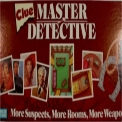Monday, February 21: Spirit of the Law
I’ll be back with The Scribbler on Monday, March 7. In the meantime, he-e-e-ere’s Janice! —JLW
JUST THE RIGHT AMOUNT OF REALITY
by Janice Law
My son, who is a professional sportswriter, and I are currently putting together a thriller – the first time I have done any collaborative writing. Since I’ve never even belonged to a writer’s group and am usually in a panic about sharing my work, producing joint chapters has been an adventure.
Fortunately, most of the time we are in agreement – homicide clearly brings a family together – but when we aren’t, the appeal is always to realism. He claims to know how mobsters operate, understandable since he lives in Chicago. I counter that I know how big country houses operate, having grown up downstairs on an upstairs downstairs estate.
Fine. Argument settled? No way, because the disagreeing party now appeals to the Conventions of the Genre, which is the writer’s equivalent of the Way of the Samurai. This in turn leads to the big consideration, how much reality is enough?
That, as Hamlet said, is the question, whether in a full length mystery, thriller, literary novel, short story, or screen play. It is a big question in the short form, as everything must be dealt with efficiently in a few thousand words or less, and it is a really big question in the short mystery story.
Why? Because in real life the motives for homicide are usually boring, and death is horrible but banal: too much liquor leading to bad temper, and bad judgment with firearms leading to disaster. The local papers have this covered, and ordinary crime is not much fun to read.
Or write. What’s the poor writer to do but reach for the Conventions of the Genre and steal as much as possible from giants past? Oh, for the ingenuity of an Agatha Christie, whose murderers spend so much time giving us original means of death and setting up crime scenes with messages. The results are totally implausible but good for exercising the little gray cells, especially as we age.
But as every action provokes an equal and opposite reaction, the Christie school of ingenious murder and elegant detection produced a reaction in the form of the tough guy detective, who kicked the body out of the library and into gritty urban alleys. The so-called cozy, whether in short or long form, has never quite recovered its dominance, on the grounds that it is too “feminine” and not “realistic.”
However, a closer look at what might be called the macho school of mystery and thriller writing reveals that Christie’s ingenuity has maintained a subterranean life in the intricate plots, hidden messages, and esoteric information beloved by any number of best sellers. Herbal poison may have given way to computer hacking, but the wild plots are no less unrealistic even with high caliber weapons and high testosterone protagonists.
As for the gritty urban detective, I fear that he is barely more realistic than Peter Wimsey or Hercule Poirot. With his high alcohol consumption and horrible diet, he would be more likely to keel over with a heart attack than run down bad guys half his age. Even Mankell’s Kurt Wallander, currently afflicted with very plausible diabetes, has not cut back on the derring-do.
But that’s exactly why we like mystery stories. We like to think that nice suburban women can outwit serial killers and that overweight guys of a certain age can save the world. Fiction is how we shape things nearer to our heart’s delight, and in mystery fiction that means bringing most criminals to justice most of the time. It also means, and this is why the mystery is in many ways a hopeful and a democratic genre, that the intelligence and common sense of quite ordinary people can set things right again after evil happens. Nothing wrong with that!
But the Conventions of the Genre will always be to some extent at odds with reality, and the writer has to find a good balance point. This is especially true in genre fiction of every kind. In short mystery stories, surprising twists, always a delight to the reader, almost always reduce plausibility. And as plots become more intricate, psychological realism often takes its leave.
Writers work around this in various ways. Research into background details is one ploy. The hope is that someone who knows so much about French military pistols or types of Japanese pottery will be trusted when plots begin to take leave of the here and now.
Local color is also helpful, whether the setting is the last word in luxury and elegance or down among seedy warehouses and moldering tenements. If you can get the reader to smell the sea air or the mildewed staircase, you’re more than half way home, because we read fiction to be elsewhere. We want to leave the here and now for some place different, even if that some place is unpleasant. Wherever we wind up, the realism of the details lets us know that we have traveled, but the Conventions of the Genre assure that we will enjoy the trip.





















I feel that any details you can add that makes the reader feel like they’re there as it happens makes the best reads. By the way, Janice, is that the Queen Mother in that car?
Hello Cindy – it is the current monarch, Queen Elizabeth II
The photo is supposedly “an artist’s rendering” of one Emma Seman, a 71-year-old Pennsylvania grandmother who was shot dead by police in September 2009 while stalking her boyfriend with a gun.
This is a brilliant piece of analysis. The fact is that the detective story, whether written by Agatha Christie or Mickey Spillane, is a branch of fantasy with just enough realistic detail to make it believable. Those things we treasure in mysteries–the multi-suspect whodunit, the brilliant detective work by private eyes and amateurs, and yes, even the extended and cinematically choreographed fights and pursuits–simply don’t exist in messy real life.
It sure as hell looks like QE2 to me. I loved the bit abou6t Conventions of the Genre, which somehow made me think of the Geneva Conventions, except these govern the humane treatment of readers.
The brilliant and clever criminal is likewise a creature of fantasy as well. The dumb kid who breaks into the store after closing and deliberately mugs for the security camera is more true to life. The writer who puts all of this forth in an entertaining way (like this column) is, fortunately, real!
I have always maintained that writing genre fiction is a balancing act between convention and invention, but you’re right: there is a third leg to the tripod that supports the story, and that’s verisimilitude.
When I was shopping my unpublished Treviscoe novel, one of the comments I got from an editor was that the book was “too authentic”. I think he was referring to the dialogue, which painstakingly conforms to the language of the period, but I’ve never been sure what the hell he meant.
Sorry, I meant Queen Elizabeth, the Queen Mother would be totally unbelievable! I guess only enough details to make our characters relatable to the readers works best; cast in a light of probability rather than a spotlight of stark facts.
I think it was Chekhov who said in every imaginary garden there is a real toad.
I always found that the toad, that creature of reality, was the most difficult thing to write. Great column!
Good analysis. I’ve gotten a fresh take on amateurs versus professionals. This past year when I needed detectives, they weren’t to be had. Did they have a THX-1138 budget crisis? Don’t know, but I’m a lot more willing to accept amateurs sleuthing at this point.
I wish I could take credit for the wonderful photo, but James Lincoln Warren found it. Wish I knew where as it is worth a story in itself.
Maybe someone will be inspired.